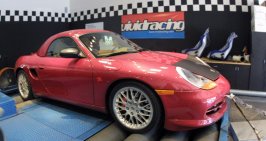
the LS (even the Vortec) is the greatest automotive innovation in the history of the universe.
Not really. Assuming you're speaking from a performance perspective, the LS isn't really that special of an engine. It has some qualities to it that make it very desirable for tuning and engine swaps, but it is far from being an "innovation". Hell, one could say that it is simply a natural evolution of the small-block chevy of the 50s (not saying that they're the same engine, just the same role).
Rather, it was an engine designed by GM to be shoved into every conceivable FR vehicle (and since that wasn't enough for them, they threw it in the Impala as well) in their lineup. As a result, it has characteristics that make it very suitable for engine swaps:
- It's a 2-valve pushrod engine. This makes it smaller, lighter, and simpler (read: cheaper) compared to most competing V8 engines, which have since moved on to DOHC.
- It's a relatively large displacement engine, which most examples being between 4.8-6.2l (yes, the LS7 and LSX exist but good luck finding those).
- Since the LS engines are so common, they are affordable and fairly easy to find.
- Most of it's applications are either trucks (which often see fleet use) or performance vehicles, so they are a bit overbuilt for the sake of durability.
This doesn't necessarily mean the LS is a bad engine. The basic formula has worked fine for decades and the numbers are there to prove it. It's just for the most part, they're a fairly basic large displacement engine with two decades of development under it's belt. They're nothing particularly special, original, or innovative. They just work.
Look at this, no RB or JZ engine can make 1000hp on a stock bottom end.
RB engine? Hell no. However, there are plenty of stupid power 2JZ engines running the stock shortblock.











